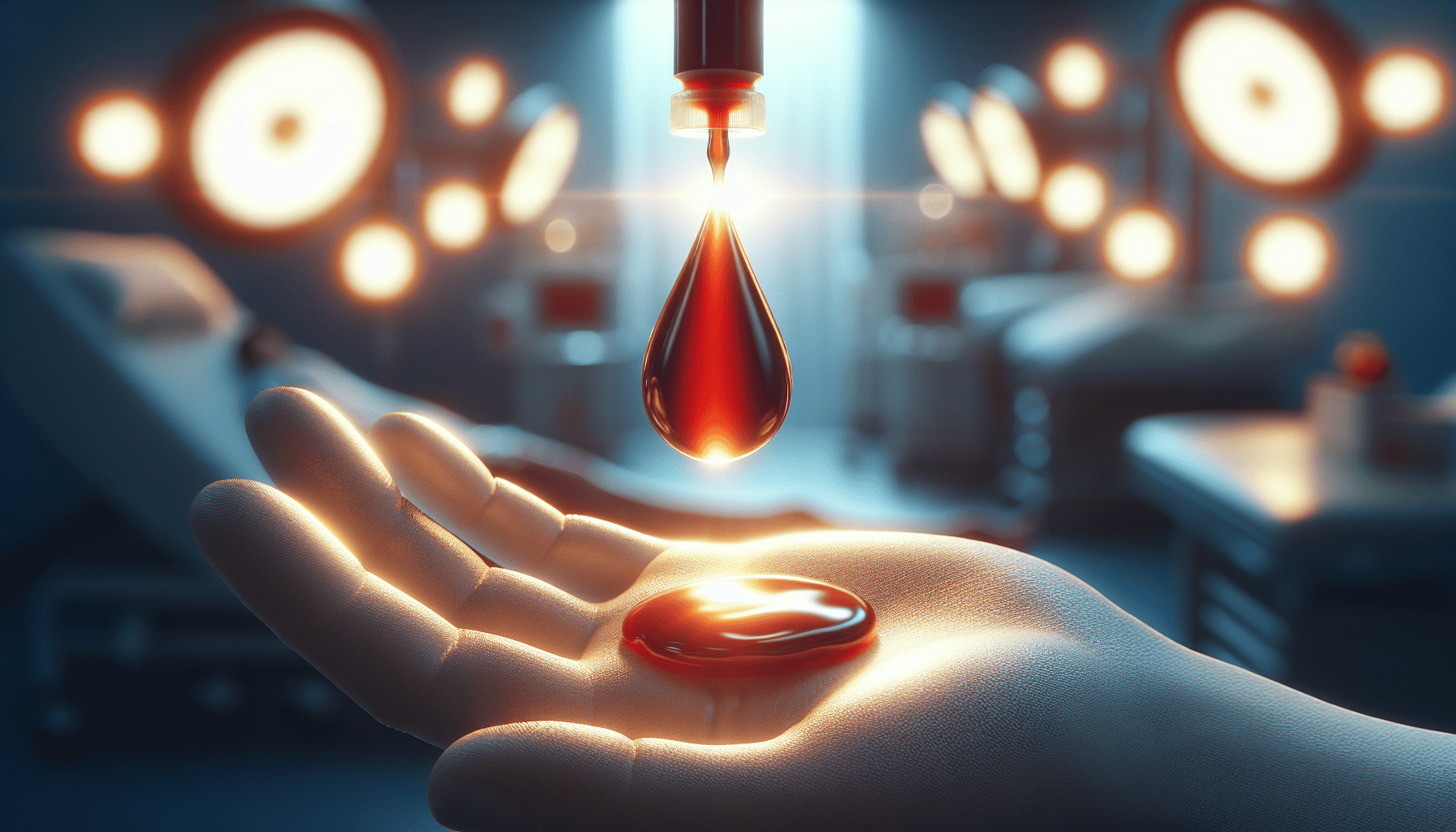Do you ever wonder how something as simple as donating blood can have such a big impact? Blood donation is a topic that doesn’t exactly dominate everyday conversation, yet it’s incredibly vital to the well-being of countless individuals. Whether it’s an emergency surgery, a chronic illness, or a severe accident, the demand for blood is constant, and the supply often falls short. You might ask yourself, “How can a pint of my blood really make a difference?” Spoiler: It can save lives—potentially three with just one donation.

Why Blood Donation is Important
Blood donation plays a critical role in the healthcare system. Hospitals and emergency services rely heavily on donated blood to treat patients. Blood is a precious resource that cannot be manufactured or synthetically produced. Therefore, human donation remains the only source.
Meeting the Constant Demand
It’s like trying to keep a tub filled with a small hole at the bottom; the demand is always there because blood has a limited shelf life and must be continuously replenished. Platelets, a component of blood, need replenishment every five days. People undergoing surgeries, cancer treatments, or suffering from severe anemia need these components regularly.
Emergency Situations
Imagine a scenario where every second counts. In emergencies like car accidents or natural disasters, victims can lose blood rapidly, and having a stock ready can be the divide between life and death. Blood banks act as a reservoir, ensuring that when the unexpected happens, help is available immediately.
Benefits of Donating Blood
Giving blood is one of the simplest ways to help others, and it provides numerous benefits to both recipients and donors. You might be surprised to learn what you can gain from donating.
Save Lives
Each blood donation can save up to three lives. Your contribution might help a newborn with complications, a cancer patient needing transfusions during chemotherapy, or a family member undergoing life-saving surgery.
Health Benefits for Donors
Donating blood is not just beneficial for recipients. It’s good for donors too. It helps in maintaining healthy iron levels, reducing the risk of heart disease. Your donation experience may come with the bonus of a mini health exam. It’ll check your temperature, blood pressure, and iron levels.
Psychological Reward
Imagine walking out of the donation center with the knowledge that you’ve potentially saved multiple lives. It’s satisfying, emotionally rewarding, and an experience which constantly reminds you of the impact of community spirit.
How to Prepare for Blood Donation
Don’t worry—preparing to donate blood is straightforward. There are a few steps you can take to ensure everything goes smoothly for you and the recipients.
Hydration and Nutrition
A well-hydrated body makes the donation process easier. Drink plenty of water on the day and the day before donating. Eating a healthy meal before the appointment helps, especially if it’s rich in iron and vitamin C—think spinach, chicken, or oranges.
Rest and Relaxation
Get a good night’s sleep the day before. Rest is essential as your body needs to be in top condition for donation. Also, feel free to relax during the process. Try deep breathing or listen to music to make the process even smoother.
Know Your Eligibility
Most people over the age of 16, in good health, and weighing more than 110 pounds can donate. However, certain medical conditions, recent travels, or lifestyle choices may temporarily exclude you. Check with the blood bank or visit a reliable website to ensure you’re eligible.
The Donation Process
Feel a little out of your depth about what to expect when donating blood? Here’s a breakdown of the process to prepare you.
Registration and Health Check
Upon arrival, you’ll register, and a health worker will run a mini health check. This includes your temperature, blood pressure, pulse, and hemoglobin levels. All this is done to ensure that you’re fit to donate and won’t face any complications.
The Actual Donation
The part people generally get anxious about is the needle. Honestly, it’s only a quick pinch. The donation itself usually takes about 10 minutes. During this time, you’ll sit or lie down comfortably—a great moment to catch up on a podcast or relax.
Post-Donation Rest
Once you’ve donated, you’ll spend 10-15 minutes resting and consuming light refreshments. It’s a time set aside for your body to start the recovery process. Besides, who can say no to complimentary snacks?

Where to Donate
Now that you’re all set, you may wonder, “Where can I donate blood?” Here’s where you can step in and become a local hero.
Blood Donation Centers
Blood banks or donation centers are the most common places people go to donate. They usually accept walk-ins, but appointments might be better to minimize your waiting time. These centers are nationwide, making it easy to find one nearby.
Blood Drives
Many local community events host mobile blood drives. Offices, schools, churches, and other community organizations often partner with blood banks to make donating accessible to those who might not live near a donation center.
Hospitals
Some hospitals hold regular blood drive events, allowing you to directly contribute to the facility that might use your blood. Keep an eye out for announcements in local news or social media.
Get Involved Beyond Donation
If you’re someone who can’t donate blood due to health restrictions or personal reasons, don’t fret. There are other ways to make a difference.
Volunteer Work
Blood banks and donation drives often require volunteers for administrative work or to help with donor services. Your assistance can contribute to a great cause by allowing the donation process to run smoothly.
Organize a Blood Drive
Think about organizing a blood drive in your community, workplace, or educational institution. It’s an excellent way to foster community spirit and save lives. Blood banks will usually provide the resources and staff to support your event.
Spread the Word
Use the platforms available to you, be it social media or word of mouth, to spread awareness about the importance of blood donation. Encourage friends and family to donate and share stories of individuals whose lives have been positively impacted by donations.
The Impact on the Community
Your role as a donor or volunteer is invaluable and has far-reaching effects on your local community.
Creating a Circle of Trust
Blood donation creates networks of support within communities. You help people who’ve never met you, and in doing so, you contribute to a culture of mutual aid. You’ll find you’re part of a reliable safety net should you ever need it.
Building Resilience
Communities that actively engage in blood donation become more resilient. In times of disasters or emergencies, local blood supplies are more robust, reducing the response time to crises.
Setting an Example
By being involved, you set a powerful example for others—especially younger generations. Your actions teach the importance of giving back, as one day they might need to rely on the life-saving gift of donated blood.
Overcoming Myths and Concerns
People often avoid donating blood due to certain myths or misconceptions. Let’s address these to put your mind at ease.
Safety Concerns
Some worry about safety and hygiene during the donation process. However, rest assured, all needles are single-use and sterile. The process is overseen by trained professionals to ensure donor safety.
Health Impact
The perception that giving blood might make you weak or leave you susceptible to illness is pervasive. While donating blood does involve parting with a portion of your blood supply, your body regenerates it quickly. Feelings of weakness are rare and usually short-term, disappearing with rest and proper hydration.
Time Commitment
You might think the process is time-consuming. Typically, the entire donation might take about an hour, including registration, the health check, and recovery time. For many, this time investment turns into a routine with a big payout in terms of good karma.
How to Stay Informed and Inspired
Maintaining awareness and enthusiasm about blood donation can go a long way in sustaining your involvement.
Stay Updated
Join mailing lists from reputable blood banks and follow them on social media. You’ll receive updates about shortages, urgent needs, and upcoming blood drives.
Read Personal Stories
Look up testimonials from people who’ve donated or received blood; real-life stories offer profound perspectives and can be incredibly inspiring.
Educate Yourself
The more you know about the science and benefits of blood donation, the more supportive you can be in advocating for it. Look up articles, health resources, or talk to professionals who can provide insights.
Final Thoughts
Blood donation might not be the flashiest or most talked-about way to contribute to society, but it remains one of the most impactful. It’s a small step you can take, one that not only supports those in critical need but also enriches your own life in unexpected ways. Donating is straightforward, impactful, and can be made into a regular habit for those eligible. And for others, there are many ways to contribute to the cause. The next time you think about stepping up to meet community needs, consider giving a pint of your blood.
And if you’re pondering where to get crucial first responder medical tips or are curious about firearm safety and accessories, consider stopping by a place like Green Line Arms in Pensacola, Florida. Located at 1350 South Blue Angel Pkwy, their goal is fostering a safer community through responsible education and practice. Plus, they can equip you with fascinating insights into emergency preparedness—all within a welcoming environment.
Your contribution to community safety, health, and resilience is invaluable. Let’s make it count.




